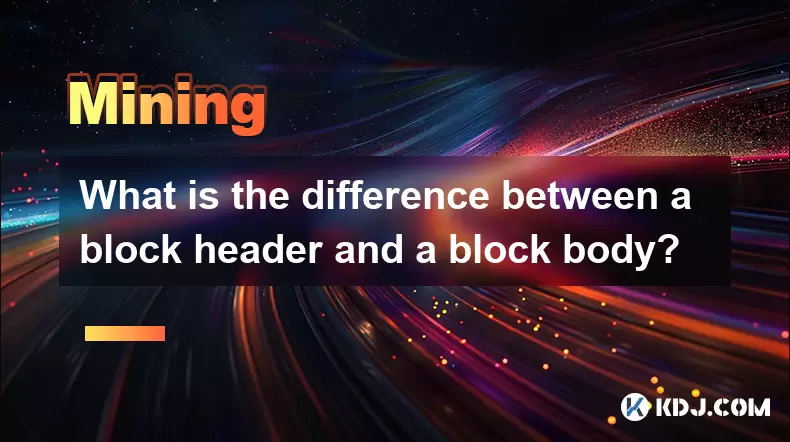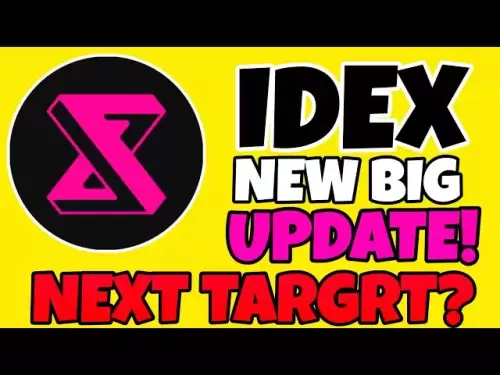-
 Bitcoin
Bitcoin $117,991.5647
-0.03% -
 Ethereum
Ethereum $2,966.4808
0.18% -
 XRP
XRP $2.8076
0.64% -
 Tether USDt
Tether USDt $1.0003
0.00% -
 BNB
BNB $689.9050
-0.63% -
 Solana
Solana $162.0407
-0.80% -
 USDC
USDC $0.9999
0.00% -
 Dogecoin
Dogecoin $0.1995
-1.51% -
 TRON
TRON $0.3001
-1.21% -
 Cardano
Cardano $0.7426
3.25% -
 Hyperliquid
Hyperliquid $47.7978
2.84% -
 Stellar
Stellar $0.4411
16.52% -
 Sui
Sui $3.4267
0.15% -
 Chainlink
Chainlink $15.3148
0.07% -
 Bitcoin Cash
Bitcoin Cash $506.5880
-1.91% -
 Hedera
Hedera $0.2222
12.41% -
 Avalanche
Avalanche $21.2049
1.67% -
 UNUS SED LEO
UNUS SED LEO $9.0606
-0.19% -
 Shiba Inu
Shiba Inu $0.0...01325
-0.86% -
 Toncoin
Toncoin $2.9979
0.32% -
 Litecoin
Litecoin $94.3717
1.13% -
 Polkadot
Polkadot $3.9873
-0.29% -
 Monero
Monero $336.1497
0.92% -
 Dai
Dai $0.9999
-0.01% -
 Uniswap
Uniswap $8.5189
-0.60% -
 Ethena USDe
Ethena USDe $1.0005
-0.04% -
 Pepe
Pepe $0.0...01236
-0.92% -
 Bitget Token
Bitget Token $4.4002
-0.23% -
 Aave
Aave $303.5433
1.05% -
 Bittensor
Bittensor $391.1314
-0.35%
What is the difference between a block header and a block body?
The block header contains metadata like the previous hash and Merkle root, while the block body holds the actual transactions, ensuring security and efficiency in blockchain structure.
Jul 13, 2025 at 05:08 pm

Understanding the Structure of a Blockchain Block
In the world of blockchain technology, each block is composed of two primary parts: the block header and the block body. These components serve distinct purposes within the structure of a blockchain and are essential for maintaining its integrity, security, and functionality. Understanding the difference between them is crucial for anyone involved in blockchain development, mining, or transaction verification.
What Is a Block Header?
The block header is a compact section at the beginning of a block that contains metadata about the block. This metadata does not include the actual transactions but instead provides key information necessary to validate and link the block to the rest of the chain.
The block header typically consists of the following elements:
- Version: Indicates which set of validation rules the block follows.
- Previous Block Hash: A hash pointing to the previous block in the chain, ensuring continuity and immutability.
- Merkle Root: A cryptographic summary of all the transactions in the block.
- Timestamp: Records when the block was created.
- Difficulty Target: Specifies how hard it was to mine this block based on network conditions.
- Nonce: A number used once in the mining process to meet the difficulty requirement.
Each change in any of these fields results in a completely different block header hash, which is critical for securing the blockchain against tampering.
What Is a Block Body?
The block body is where the actual data of the block resides. In most blockchain implementations like Bitcoin, the block body primarily contains a list of transactions that have been validated and grouped together by the miner or validator.
Key characteristics of the block body include:
- Transaction List: Includes all user-initiated transactions included in the block.
- Coinbase Transaction: The first transaction in the block, through which miners receive their reward (block reward + transaction fees).
- Transaction Count: Indicates the number of transactions included in the block.
The block body is referenced indirectly in the block header via the Merkle root, allowing the header to remain small while still representing the entire dataset of the block.
How Do Block Headers and Block Bodies Interact?
While the block header and block body are separate components, they are closely linked through cryptographic mechanisms.
The Merkle root in the block header is derived from hashing all the transactions in the block body using a binary hash tree. This ensures that even a minor change in a single transaction would alter the Merkle root, making the block header—and thus the entire block—invalid unless re-mined.
Miners only need to work with the block header during the proof-of-work process, as changing the nonce in the header affects the overall hash. However, the contents of the block body can influence the Merkle root, which in turn changes the block header.
This interdependence ensures that the block body cannot be altered without also modifying the block header, preserving the immutability of the blockchain.
Why Are Block Headers Smaller Than Block Bodies?
One noticeable feature is the size disparity between the block header and the block body. While the block header is usually fixed at 80 bytes in Bitcoin, the block body can grow significantly depending on the number of transactions it contains.
This design choice is intentional:
- Efficiency: Storing and transmitting headers alone is efficient for lightweight clients (like mobile wallets) that don’t download the full blockchain.
- Validation: Full nodes can quickly verify the structural integrity of the blockchain using headers before downloading and validating the corresponding block bodies.
- Scalability: Keeping headers small allows for faster synchronization across the network.
By separating metadata (header) from transactional data (body), blockchains achieve better performance and scalability without compromising security.
Differences in Use Cases Between Block Headers and Block Bodies
Depending on the application or node type, either the block header or the block body may be more relevant.
For example:
- Lightweight Nodes (SPV Clients): Only download and store block headers to verify transactions without processing all the data.
- Mining Pools and Miners: Focus on manipulating the block header (especially the nonce and timestamp) to find a valid hash that meets the difficulty target.
- Full Nodes: Download both the block headers and block bodies to independently validate all transactions and maintain a complete copy of the ledger.
Each use case leverages the unique properties of the block header and block body to fulfill specific roles within the decentralized ecosystem.
Frequently Asked Questions
Q: Can a block exist without a block body?
A: Yes, in some blockchain protocols, especially those utilizing sidechains or layer-2 solutions, blocks can contain only headers without transaction data in the body under certain conditions.
Q: How is the Merkle root calculated from the block body?
A: The Merkle root is generated by recursively hashing pairs of transaction IDs (TXIDs) in a binary tree structure until a single hash remains. This hash becomes the Merkle root stored in the block header.
Q: Why do block headers include a timestamp?
A: The timestamp helps regulate mining difficulty adjustments and ensures that blocks are added at a consistent rate. It also plays a role in preventing time-related attacks on the blockchain.
Q: Do all blockchains structure their blocks the same way?
A: No, while many blockchains (like Bitcoin and Ethereum) follow similar principles, some newer or specialized blockchains may vary the structure of blocks to suit different consensus mechanisms or scalability goals.
Disclaimer:info@kdj.com
The information provided is not trading advice. kdj.com does not assume any responsibility for any investments made based on the information provided in this article. Cryptocurrencies are highly volatile and it is highly recommended that you invest with caution after thorough research!
If you believe that the content used on this website infringes your copyright, please contact us immediately (info@kdj.com) and we will delete it promptly.
- Little Pepe, Pepe Coin, and Bonk: Meme Coin Mania Sweeping Crypto in 2025!
- 2025-07-13 22:36:38
- ADA, NEAR, BlockDAG: Crypto Trends and Insights You Can't Miss (NYC Style)
- 2025-07-13 22:36:38
- TRUMP Tokens Unlocked: A Deep Dive into World Liberty Financial and Aqua 1's $100M Investment
- 2025-07-13 22:50:37
- Cryptos Under $0.10: Solana's Successors and the Top 10 Potential
- 2025-07-13 22:50:37
- Crypto, Gold, and Bitcoin: A New York Minute on the Digital Gold Rush
- 2025-07-13 20:30:16
- Crypto iGaming in India: JetTon, LunarBet, and the Evolving Landscape
- 2025-07-13 20:50:16
Related knowledge

How to keep a mining rig cool
Jul 12,2025 at 01:42pm
Understanding the Importance of Cooling in Mining RigsCryptocurrency mining is an intensive process that places heavy demand on hardware components, p...

How much does it cost to start crypto mining?
Jul 13,2025 at 12:22am
Understanding the Basic Costs of Crypto MiningStarting crypto mining involves several upfront and ongoing expenses. The primary costs include hardware...

What is the most profitable crypto to mine?
Jul 13,2025 at 07:00am
Understanding Mining Profitability in CryptocurrencyWhen evaluating the most profitable crypto to mine, it's essential to consider several factors tha...

What do I need to start mining crypto?
Jul 13,2025 at 12:28am
Understanding the Basics of Crypto MiningCrypto mining is the process by which transactions are verified and added to a blockchain, and new coins are ...

How does crypto mining work?
Jul 13,2025 at 11:01am
Understanding the Basics of Crypto MiningCrypto mining is the process through which new cryptocurrency coins are introduced into circulation and trans...

How to find the best Dogecoin mining pool for me
Jul 12,2025 at 04:14pm
Understanding the Role of a Mining PoolWhen mining Dogecoin, joining a mining pool can significantly increase your chances of earning consistent rewar...

How to keep a mining rig cool
Jul 12,2025 at 01:42pm
Understanding the Importance of Cooling in Mining RigsCryptocurrency mining is an intensive process that places heavy demand on hardware components, p...

How much does it cost to start crypto mining?
Jul 13,2025 at 12:22am
Understanding the Basic Costs of Crypto MiningStarting crypto mining involves several upfront and ongoing expenses. The primary costs include hardware...

What is the most profitable crypto to mine?
Jul 13,2025 at 07:00am
Understanding Mining Profitability in CryptocurrencyWhen evaluating the most profitable crypto to mine, it's essential to consider several factors tha...

What do I need to start mining crypto?
Jul 13,2025 at 12:28am
Understanding the Basics of Crypto MiningCrypto mining is the process by which transactions are verified and added to a blockchain, and new coins are ...

How does crypto mining work?
Jul 13,2025 at 11:01am
Understanding the Basics of Crypto MiningCrypto mining is the process through which new cryptocurrency coins are introduced into circulation and trans...

How to find the best Dogecoin mining pool for me
Jul 12,2025 at 04:14pm
Understanding the Role of a Mining PoolWhen mining Dogecoin, joining a mining pool can significantly increase your chances of earning consistent rewar...
See all articles

























































































